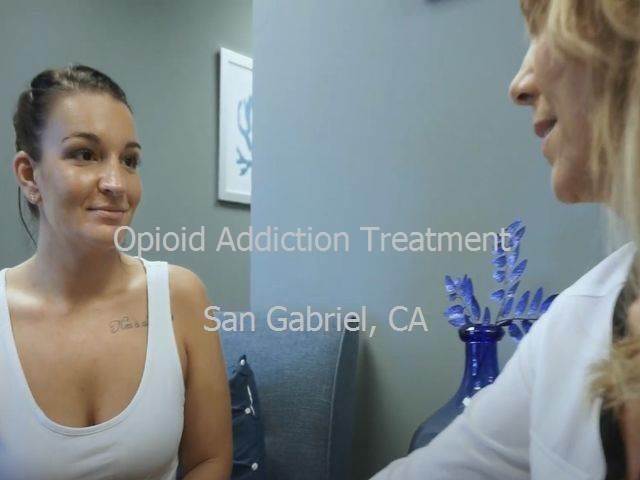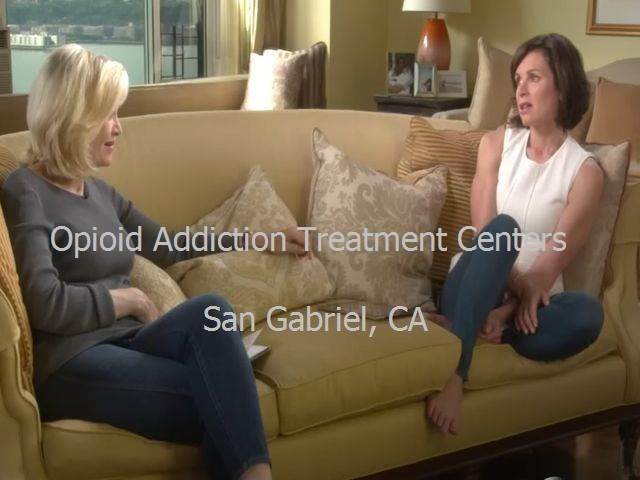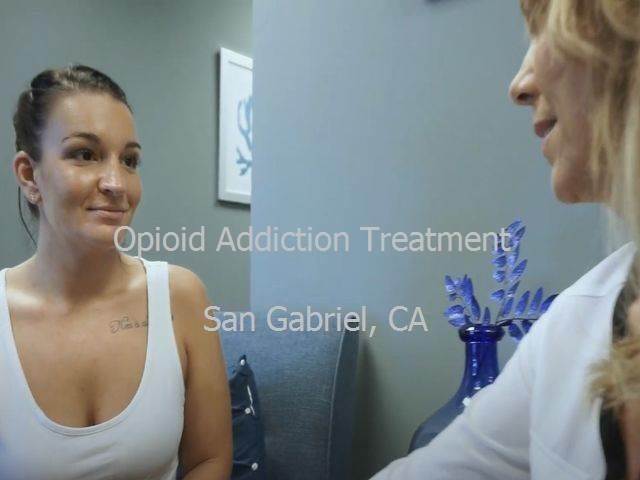Opioid use disorder is a health problem that affects many individuals in the United States nowadays. 10s of thousands of people pass away from opioid overdose every year, and a lot more are struggling with opioid addiction. Unfortunately, instead of going to the hospital to get treatment for substance abuse carries a bad preconception, individuals try to fight the addiction on their own. This often causes failure and regression.
The issue of opioid use disorder in San Gabriel, California

Even though, nowadays, effective treatments for opioid misuse are ending up being more available, a lot of people still experience this issue. They often blame themselves and their lack of determination for the failure to combat drug addiction. In reality, this disorder is not a type of bad behavior or a sign of ethical failure. It is a chronic medical condition that includes considerable modifications in specific parts of the brain, a physical dependence that is very difficult to fight without professional support. Only just recently, medical professionals came close to understanding the mechanism of opioid addiction and establishing better opioid treatment programs.
The San Gabriel, California, opioid addiction treatment center provides several ways of treating substance use disorder. Keep checking out to find out about the nature of opioid addiction and which types of treatment offer the clients a greater chance of successful recovery.
Opioid addiction treatment rehabilitation services
National institutes for health care developed different techniques of helping patients with opioid dependence. A few of them involve taking addiction medicine to manage opioid cravings. In many cases, treatment retention is suggested. It is vital to openly discuss your scenario with health care providers to pick the most effective treatment plan.
Substance abuse treatment include several types:
- Treatment retention. Some individuals wish to get away from the environment that encourages opioid misuse. They can not combat drug abuse when they are surrounded by triggers and their family members or good friends have simple access to opioids. The downside of this method is the requirement to take a break from work. The positive aspect of this program is meeting people with the same battle and getting their assistance.
- Outpatient opioid addiction treatment. Clients can continue to work and live as they did while receiving health and human services. They go to medical facility for systematic reviews, counseling and medications. This is a less drastic modification of lifestyle compared to living in the treatment facilities. Such patients do not run the risk of losing their jobs however need to be accountable about staying on track.
- Behavioral therapy. This kind of treatment includes informing patients on how to make positive modifications in their behavior connected with opioid use disorders. They get access to the entire variety of mental health services such as cognitive behavioral therapy, private therapy, contingency management, family therapy, support groups, etc.
- Medication assisted treatment (MAT): medicines plus counseling. Whether it is a domestic program or an outpatient health care service, any treatment plan can include taking medications. This type of treatment of opioid misuse has proven to be very efficient. Regretfully, it is frequently misinterpreted and treated with suspicion. Medications that are used to treat opioid addiction come from the group of opioids themselves, so there is a misconception that by taking them you simply replace one addiction with another. This is not real for 2 reasons. First, the medications do not produce the euphoric effects unlike other opioid drugs. And 2nd, the statistics reveal that using medical assisted therapy helps to substantially decrease the variety of deaths from overdose
- The drawback of this type of treatment is that it is not commonly offered. Prior to the professionals can recommend these medications, they require to undergo particular training. And after they finish the course, they can only prescribe this treatment to a minimal variety of patients. Therefore, centers that offer MAT frequently have a long waiting list. The benefit of this type of treatment is that thanks to the medications, the patients do not experience severe withdrawal symptoms. The cravings are not so strong also, so the majority of people remain in treatment and are less most likely to regression.
Only an expert clinician educated on substance use disorder can pick the best treatment. The medical professional requires to know and consider all the factors that led a person to drug abuse and mental health problems. Contact the opioid addiction treatment center in San Gabriel, California, to get certified assistance.
Mechanism of opioid addiction
Opioid drugs hack the reward system of an individual’s brain and make the person feel great if they take opioids. Usually, fulfilling such needs as consuming or recreation lead to the release of dopamine. This hormonal agent is accountable for the sensation of satisfaction or complete satisfaction. It rewards individuals for doing things that are important for the survival of mankind.
When opioids reach the brain, they connect themselves to specific receptors, which triggers the reward system and produces the feeling of high. Individuals wish to experience that feeling again. More significantly, their brain signals them that taking opioids is the most vital thing for their survival. That is how the addiction settles in.
There are 2 outcomes of this modification in the brain:
- The first one is the advancement of drug tolerance. Individuals need more drugs to reach a state of euphoria. Opioid use disorder frequently starts with prescription pain relievers. Sometimes patients increase the dosage of prescription opioids to get high, and this leads to opioid abuse. Some people even switch to more powerful drugs like heroin.
- The second result is opioid dependence. Individuals continue substance abuse to avoid withdrawal symptoms. Due to breakdown of the reward system, without the drugs individuals feel uneasyness and have an awful state of mind.
Other signs of opiate withdrawal include:
- Body aches;
- Absence of sleep;
- Nausea;
- Diarrhoea;
- Goosebumps, and so on.
Understanding about the nature of substance use disorders can assist physicians inform their clients on what withdrawal symptoms to expect and how to deal with the cravings. Depending upon the patient, physicians choose the most effective treatments that might include medicine prescription and behavioral therapies. It might not be possible to entirely eliminate the opioid addiction, but mental health services can considerably decrease the opioid misuse and the number of heroin overdose deaths.
Opioid addiction should be treated the way one would deal with a persistent disease. People experiencing drug addiction are motivated to join the San Gabriel, California, rehab programs and improve their health and overall quality of life. As soon as you quit the drugs, return for maintenance treatment.
Who can get treatment for opioid abuse in San Gabriel, CA?

Individuals typically feel ashamed to go to the health center for opioid abuse treatment. There are two main reasons for this: they are either afraid to have a bad image in the neighborhood or have actually already quit on themselves. However these issues need to not dissuade clients from fighting substance use disorders. Anyone is totally free to reach rehabilitation centers and see what help they can get.
Two main categories of opioid use disorders are treated with San Gabriel, California, rehab programs:
- Prescription drug abuse. Opioids are normally prescribed in the form of painkillers for chronic or severe pain. It is possible to establish addiction to these medications. As a result, some patients start to misuse opioids and take bigger doses of them. National institutes such as the Center for disease control produced suggestions on how to help these patients gradually reduce the drug use.
- Heroin addiction. This disorder frequently stems from the previous one. But some people rely on this drug for leisure purposes. Combating heroin addiction is really hard, and clients ought to utilize all the treatment resources they can gain access to. Even then, it often takes several attempts to beat the condition.
The most effective treatments normally include both mental health services and medications.
Frequently Asked Questions – FAQ
Is opioid addiction a mental illness?
Opioid use disorder is a persistent brain condition. At first, individuals may turn to drugs because of personal problems. That is why substance abuse and mental health are typically dealt with simultaneously. Most patients benefit from therapy, behavioral therapies and support groups. However it is essential to bear in mind that opioids make substantial changes to the brain, making it very hard to fight the addiction without medications.
What medications are used to treat opioid use disorder in San Gabriel, California?
National institutes authorized 3 medications for treatment of opioid drug abuse: methadone, buprenorphine and naltrexone. They have various names and results on the brain. The first 2 medications replace the opiates and smooth the withdrawal symptoms without making the patients high. Naltrexone obstructs the mu-opioid receptor, working as an opioid antagonist.
How do I get medication-assisted treatment in San Gabriel, California?
Only a certified clinician can prescribe you medications for opioid use disorder. Visit the office of a healthcare supplier that completed the required training and look for a program of medication-assisted therapy.

